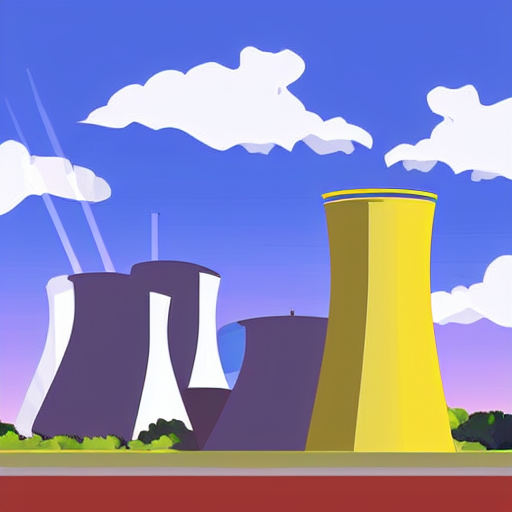
In the quest to combat climate change, the world is witnessing a pivotal moment marked by an international consensus on transitioning away from fossil fuels. Despite the growing prominence of renewable energy sources, the limitations in energy storage, especially in developing markets, pose significant challenges. In this context, nuclear power emerges as a potent and often overlooked solution that could play a crucial role in achieving aggressive carbon emission reduction targets.
The Renewables Dilemma
Renewable energy sources such as wind and solar are gaining momentum globally. However, the Achilles’ heel of these technologies lies in their intermittent energy production and the difficulty of storing the generated power. Electric vehicle batteries, a primary storage medium, are costly, and their energy density still lags behind traditional fossil fuels. Grids powered by renewables often resort to natural gas as a reliable “base load,” undermining efforts to transition completely away from fossil fuels.
The Nuclear Alternative
Nuclear energy, with its ability to provide a stable base load without significant carbon emissions, presents itself as a viable alternative. At the recent United Nations climate change gathering in Dubai, the U.S. and 21 other nations pledged to triple nuclear power production by 2050, signaling a renewed focus on this often controversial energy source. Retired Admiral Richard Mies emphasized that achieving aggressive carbon reduction targets is impossible with wind and solar alone, stressing the need to recognize the advantages of nuclear power.
Safety Concerns and Reality Check
One of the significant challenges facing the nuclear industry is the perception of safety risks associated with catastrophic accidents. However, data suggests that deaths and illnesses caused by air pollution from fossil fuels far outweigh the impacts of nuclear incidents. The Fukushima disaster in 2011 and the Chernobyl meltdown in 1986 were specific instances, both attributed to external factors or flawed designs not representative of modern nuclear technology.
Current Landscape and Potential
Currently, nuclear power contributes approximately 18% to U.S. electricity generation, lagging behind natural gas and coal. The goal is to retire coal plants, the dirtiest of the bunch, and expand renewable energy sources. However, the trajectory indicates a decline in nuclear power’s share, primarily due to the periodic retirement of large, aging reactors.
Yet, nuclear plants offer a unique advantage over renewables – they can be located anywhere. Retrofitting existing coal infrastructure for nuclear use could provide substantial construction savings, according to a study by the Bipartisan Policy Center. The recent certification of Small Modular Reactor (SMR) technology, like NuScale’s design, introduces a scalable and efficient approach to nuclear power. SMRs could potentially be a game-changer, providing a cleaner and more flexible energy solution.
The Promise of SMRs
SMRs, with their smaller size and modular design, offer advantages such as centralized factory construction and scalability. NuScale’s approved design features 12 reactors, each producing 50 megawatts of power. These smaller reactors can be adapted to meet specific energy needs, offering flexibility and efficiency. Furthermore, the approval of transportable micro-reactors raises the possibility of powering individual factories, reducing carbon footprints associated with energy-intensive industries like steel and cement production.
Challenges and Future Outlook
While the potential of new nuclear designs, especially SMRs, is promising, cost-effectiveness remains a hurdle. Heavy government subsidies are often required, as demonstrated by NuScale’s canceled demonstration project in Utah. The evolving policy landscape, with more states opening doors to nuclear power and clean energy tax credits, is encouraging. However, the journey towards cost-competitive nuclear power is an evolutionary process that requires ongoing support and investment.
As nations grapple with the imperative to decarbonize their energy systems, nuclear power emerges as a compelling solution that can bridge the gap between renewable energy and the need for a reliable base load. The potential of SMRs and micro-reactors, with their scalability and versatility, opens new possibilities for clean and efficient energy production. The challenge lies in overcoming regulatory barriers, reducing costs, and garnering sustained government support to usher in a nuclear renaissance that could reshape the global energy landscape. In the pursuit of clean, affordable power, nuclear energy might hold the key to a sustainable and low-carbon future.





